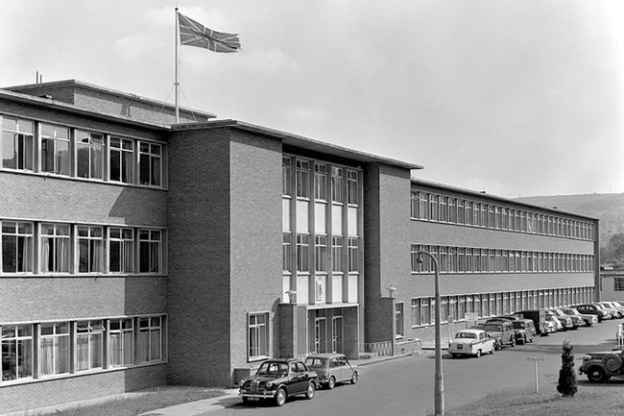Cheltenham’s journey from the post-World War II period to the present.
Post World War II to Present:
Government Communications Headquarters (GCHQ):
One of the most significant developments in Cheltenham’s post-war history was the establishment of the GCHQ. Originally located in Eastcote, London, during World War II, it moved to Cheltenham in the 1950s, mainly due to concerns about a potential nuclear threat to London. Over the years, GCHQ has become one of the town’s largest employers. Its distinctive “doughnut” building, completed in 2003, is an emblem of modern Cheltenham. The presence of this intelligence agency has not only impacted the town’s economy but also its international reputation, highlighting the town’s significance in national security.
Festivals and Culture:
Post-war Cheltenham saw a cultural renaissance with the foundation and expansion of its festivals. Apart from the already established Literature and Music Festivals, Cheltenham introduced new festivals, including the Science, Jazz, and Film Festivals. These events have not only bolstered Cheltenham’s cultural credentials but have also been pivotal in drawing tourists, thus supporting the local economy.
Education:
Cheltenham’s reputation as an educational hub has only grown in the post-war years. Institutions like the University of Gloucestershire and Cheltenham Ladies’ College have continued to draw students from across the globe. The emphasis on education has further solidified the town’s identity as a center of learning and innovation.
Urban Development and Preservation:
As with most towns in the latter half of the 20th century, Cheltenham faced the challenges of urbanization and the need for modern infrastructure. However, the town has managed to strike a balance between development and preservation. While accommodating new housing and commercial spaces, efforts have been made to retain the historic Regency architecture and the green spaces that define Cheltenham’s character.
Economic Shifts:
While Cheltenham’s spa heritage had waned by the mid-20th century, the town found new avenues of economic growth. Apart from the GCHQ, Cheltenham’s economy has been supported by its festivals, tourism, education, and a variety of businesses ranging from retail to tech startups.
Modern-Day Cheltenham:
Today, Cheltenham is a vibrant town that effortlessly combines its historic charm with modern sensibilities. It’s a place where Regency buildings sit alongside contemporary structures, where traditional events like the Gold Cup coexist with modern festivals, and where a storied past paves the way for a promising future.
Conclusion:
From the aftermath of World War II to the present, Cheltenham has navigated the challenges and opportunities of changing times with grace. Whether as a vital hub for intelligence gathering, a beacon of culture and education, or simply a picturesque town with a rich heritage, Cheltenham continues to be a vital and dynamic part of the UK’s landscape.
